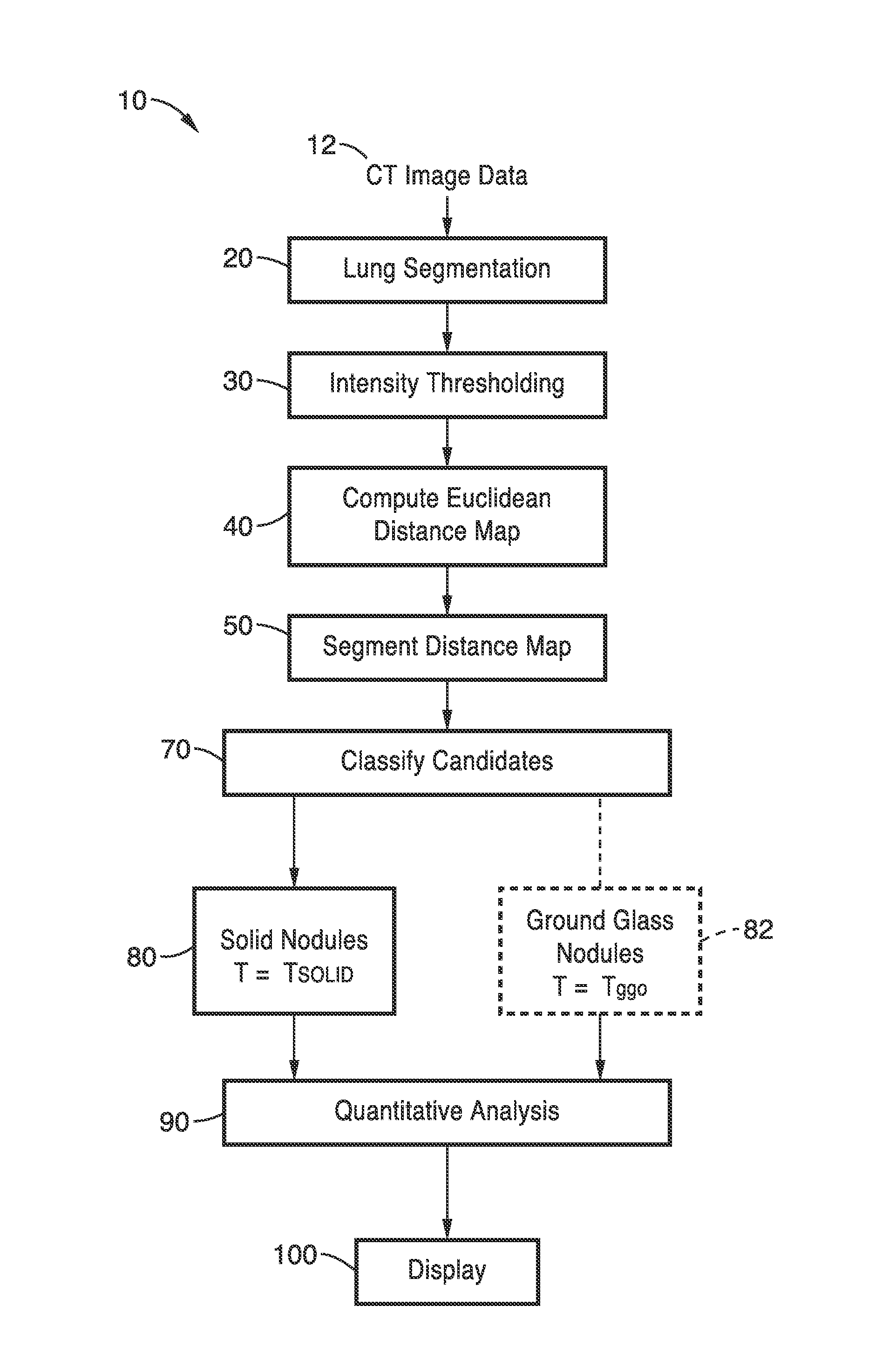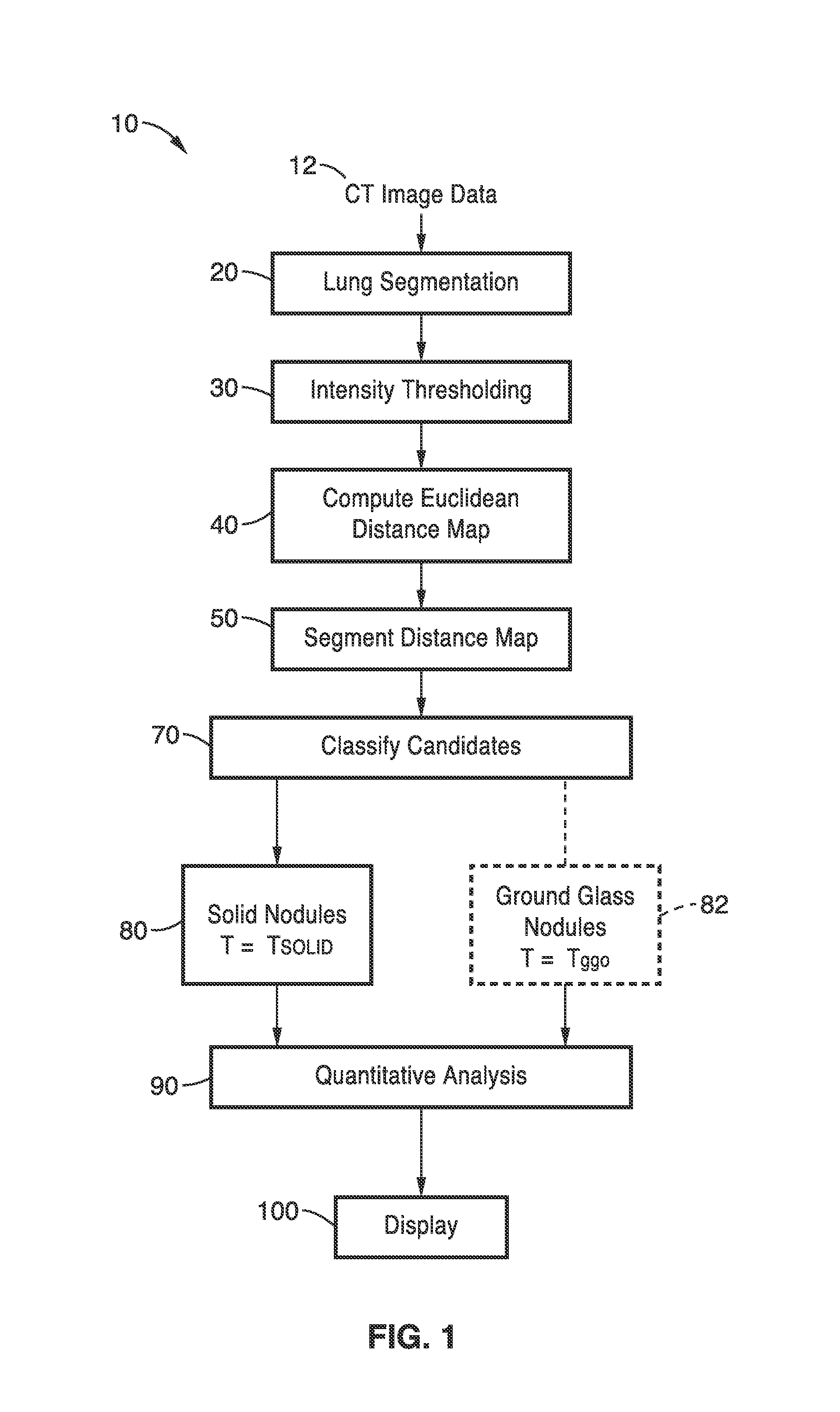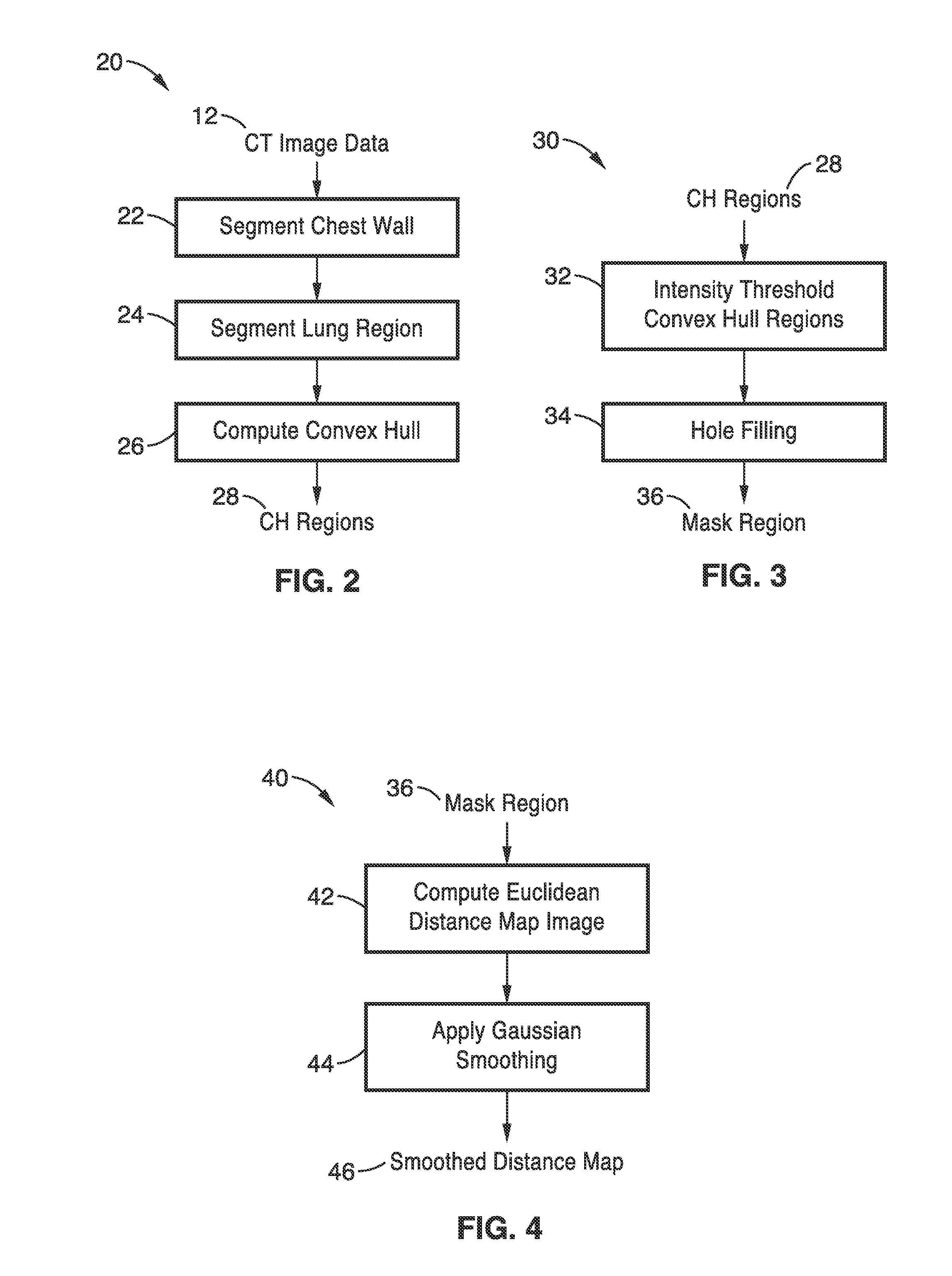System and method for automated detection of lung nodules in medical images
a technology of medical images and detection methods, applied in the field of computed tomography imaging, can solve the problems of difficult visual detection of nodules, nodule detection is one of the more challenging visual detection tasks, and the role of diagnostic imaging is generally limited to visual inspection in clinical practice, so as to improve the accuracy of detecting nodules, and reduce false positive detections.
- Summary
- Abstract
- Description
- Claims
- Application Information
AI Technical Summary
Benefits of technology
Problems solved by technology
Method used
Image
Examples
Embodiment Construction
[0032]FIG. 1 illustrates an overview flow diagram of the lung nodule detection method 10 of the present invention. The scanned CT images 12 are first segmented at step 20. Next, intensity thresholding is performed is performed at step 30. This data is then used for performing Euclidean distance transformation at step 40. The distance map is then segmented at step 50. Candidates are classified at step 70. Solid nodules are detected at step 80 based on threshold T=Tsolid. For detection of ground class nodules at step 82, intensity thresholding step 30, Euclidean distance transformation step 40, and distance map segmentation step 50 are repeated based on threshold T=Tggo (see FIG. 3, FIG. 4 and FIG. 5). At step 90, quantitative assessment may be performed for regions of interest (ROI's) identified as nodules. The detected nodules may then be displayed as overlays in step 100.
[0033]FIG. 2 is a detailed flow diagram of the lung segmentation step 20 of
[0034]FIG. 1, which incorporates regi...
PUM
 Login to View More
Login to View More Abstract
Description
Claims
Application Information
 Login to View More
Login to View More - R&D
- Intellectual Property
- Life Sciences
- Materials
- Tech Scout
- Unparalleled Data Quality
- Higher Quality Content
- 60% Fewer Hallucinations
Browse by: Latest US Patents, China's latest patents, Technical Efficacy Thesaurus, Application Domain, Technology Topic, Popular Technical Reports.
© 2025 PatSnap. All rights reserved.Legal|Privacy policy|Modern Slavery Act Transparency Statement|Sitemap|About US| Contact US: help@patsnap.com



